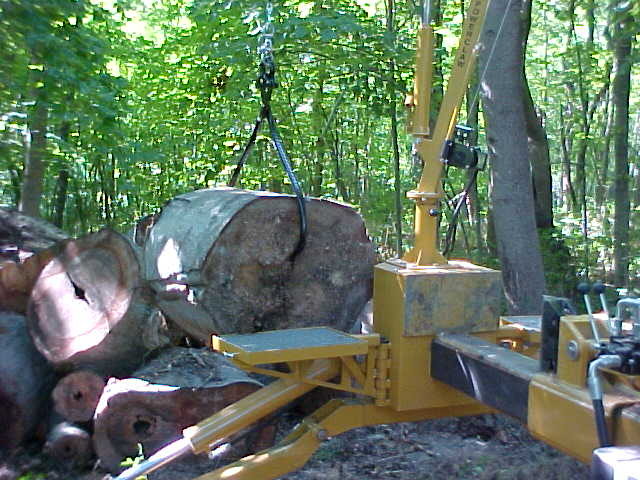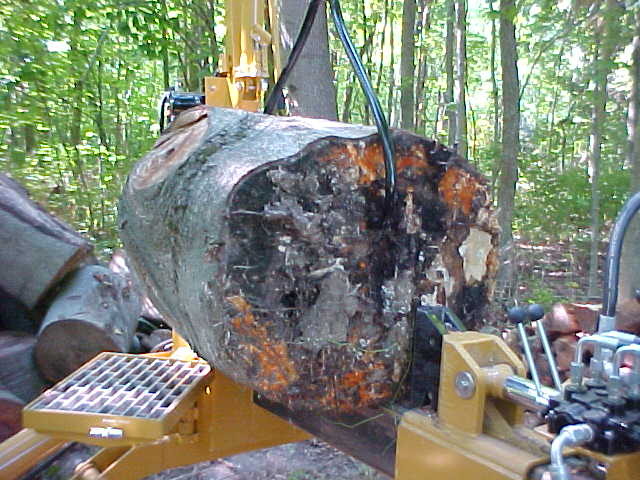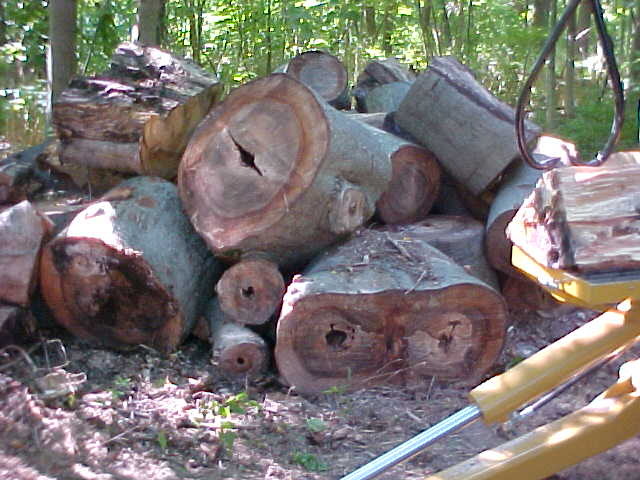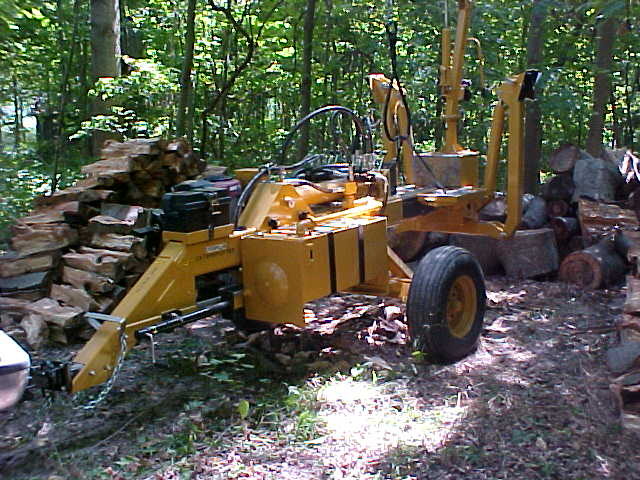Preston
Addicted to ArboristSite
Who in their right mind is going to be picking up 30 to 40 inch rounds off the ground? I know I won't be one of um.





I agree with you sunfish that a lot of the hydro's are the same to more expensive than a SS. I looked at a couple of Timber Wolf splitters here locally and they are out of their mind on pricing, or I am just cheap?
I'd say you're just that cheap. The price of steel and supplies has gone so high anymore you would have a hard time doing one for 3/4's of their asking price. I went with all used steel on mine but new pump, cylinders, hoses and valves. Now if you had most of it laying around that is different but you still would be up there. All I can say is if you think the profit margin is so great for them, go ahead a build a few and let us know how it goes. You'd probably sell them like hotcakes if they were of the same quality and specs. I know I wouldn't try it.
Not if you know how to do it and who/where to get the parts needed. The processor I'm building will have a 3 to 5 second cycle time, and that's with a 6" cylinder with a 33" stroke. ALL the hydraulics for the whole processor only cost $4200. That's EVERYTHING related to the hydraulics including the 150 gallon tank, 10 valves, a sequencing valve and 2 section pump. For the correct size pump, cylinder and dump valve for a 'regular' sized splitter, I'm thinking maybe $700.It cost money to make hydraulics fast!
That is NOT how to make a fast cycle time. Moving fluid efficiently is how to make fast cycle time. And I would consider a 3 second cycle time on a splitter that size to be 'fast' and still be economical to achieve.Sure by putting a 1 inch cylinder on a 28 gpm pump like in video you could have a smoking fast cycle time but it would then be like a SS and have no power to do the nasty wood. So what do you consider fast?
Of course you could. You probably don't have the 3 grand a month product liability insurance policy to pay for. The business I used to be in cost me 10 grand a month just on product liability alone, (fire trucks), not to mention mandated employee health and benefits on top of wages, stocking material for inventory, keeping the lights on, etc, etc.I looked at a couple of Timber Wolf splitters here locally and they are out of their mind on pricing, or I am just cheap? I can build or have built a machine for 1/4 the cost they want.
Exactly. I like to hear the rationale behind it all.I don't think anybody gets upset with someone because they disagree with how they do things, most like myself just wonder why.
Yes it has, and do you know WHY? It's because iron ore is now publicly traded on the open market, just like crude oil. It's the speculators that drive up the price of oil, and now steel.The price of steel has gone through the roof.
Well I would be interested to see how you are going to get such a fast cycle time out of that cylinder. From my calculations even with a 28gpm pump and a 6inch cylinder, with say 3inch rod, and 33inch stoke will take 8.7 seconds to extend and 6.5 seconds to retract for a 15.2 second cycle time? You would need to run 80gpm pump to get 5 second cycle time and 140gpm pump to run 3 second cycle. I think you calculations may be way off or you know more than I do but I just can't see that being possible

Well for one thing, it's a 6" cylinder with a 4 1/2" rod, so the amount of fluid needed to fill it on the return stroke will only be a little over 1.5 gallons as opposed to the over 4 gallons to fill it on the out-stroke. And in this case, you're almost right, it's a 58 GPM pump dedicated to just that cylinder, but the system also has a dump valve and 2 ports in the base of the cylinder. What this allows is the returning fluid from the cylinder to be dumped directly into the tank instead of flowing thru all the hoses and the valve to get there. Cuts the retract time by more than half. If I wanted to make it even faster I could use an accumulator and a regenerative system for the out-stroke and an air assist to return it.
As far as my calculations being off, I doubt it. I've been doing this since the early 80's. I thought I was wrong once but I was only mistaken.


chaikaw.....one thing I notice with the steel we used when I was still hanging iron. The beams from most foreign countries was dirty steel. I thought is was from iron not being what we called 'first fired' steel. It acted as though it was full of slag. That made us figure it was full of rebar. When you cut it with a torch it would flair out and blow a hole in the cut. When you cut it with a band saw it would reach a point where it would stop cutting and eat the blade up. That stuff was very dirty.
So I say that to put forth the argument that all the scrap steel is reworked to make new steel that is not clean. We have been flooded in America with that junk. If you get steel with a Canada stamp, it probably the best you'll find in today's world.
Well for one thing, it's a 6" cylinder with a 4 1/2" rod, so the amount of fluid needed to fill it on the return stroke will only be a little over 1.5 gallons as opposed to the over 4 gallons to fill it on the out-stroke. And in this case, you're almost right, it's a 58 GPM pump dedicated to just that cylinder, but the system also has a dump valve and 2 ports in the base of the cylinder. What this allows is the returning fluid from the cylinder to be dumped directly into the tank instead of flowing thru all the hoses and the valve to get there. Cuts the retract time by more than half. If I wanted to make it even faster I could use an accumulator and a regenerative system for the out-stroke and an air assist to return it.
As far as my calculations being off, I doubt it. I've been doing this since the early 80's. I thought I was wrong once but I was only mistaken.

Ok I see how your planning on making it faster by using a 58gpm pump which would give roughly a cycle time of 6 seconds, but I thought it wasn't expensive to make hydraulics fast? You would need what a 66 plus horse power engine to run that? I think that shoots economical right in the foot! Not only on fuel/gas used but in the price of an engine that large. Just from a quick search on fleebay I found a used 4cyl john deere diesel for about 4K!!! So what engine are you planning to run? You might want to start a thread on how you are going to build this and as the build progresses as I would be interested to see how it goes. I can't even find a pump that will pump 58gpm and have 3000psi. I found lots of 40gpm pumps but pressure was about 2000psi
chaikwa I now understand what you are saying, and that is that you can build a better splitter with parts/metal that you scrounge cheaper then a commercial built splitter. Yes I do agree with this part and I have stated this more or less on this thread. I also think their is too much expense in a new splitter, as they do not have no where near that much money in it to start with.
However here is what I do not understand. You say you "don't understand why the commercial splitters are so slow". Then you say you can build one cheaper and better. Yes you can but that is not a level playing field you are currently playing. Do this, price all new metal, all new hoses, control valves, cylinders, tires, pump, 66hp engine, and what other else to make your splitter new like the one you seen in the video, then compare. It is not fair that you expect them to compete with price and speed when you are using second hand stuff for 90% of your splitter build. I always say people can build a better splitter cheaper than the commercial ones for a lot less by using second hand stuff, some time and knowledge. However you cannot do so without using second hand stuff. I still think the splitters are overpriced for what they are and what they cost to build, but everything is anymore, just a sign of the times. I don't buy a new truck costing 60,000 plus dollars to build out of plastic either!
Well said, I've been in metal fab all my life an no way I'd attempt to make front end loader.Reading this takes me to a product I just bought for my tractor. I bought a Woods front end loader for my Kubota L2800. I stood there yesterday looking at it and wondered where the $4000 is? I finally figured out I paid that because Woods has the all the different jigs, robotic welders, knowledge and material needed to build one and I don't. The same loader from Kubota was $5000.
In the end, I could not have built what I bought so I paid what I did for someone else to do so. Sometimes we just have to let the other man build for us.
Enter your email address to join: